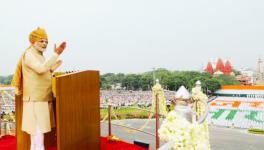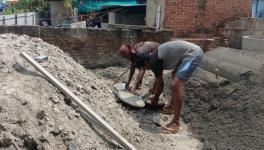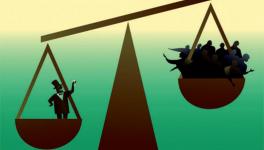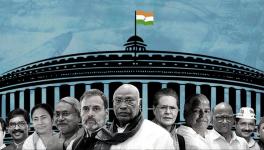The Staggering Wealth Divide: The Trickle Up Effect
By 2016 the richest 1% of the world's population will own more than 50% of the world's wealth, says Oxfam's recent report on global wealth inequality. Winnie Byanyima, Executive Director of Oxfam International, said: “Do we really want to live in a world where the one percent own more than the rest of us combined?
Clearly, the scale of global inequality is quite simply staggering and the gap between the richest and the rest is widening fast.
Credit Suisse data, on which the Oxfam reports is based on, shows that the share of the richest 1% in the global wealth has been increasing consistently since the year 2009. In the period between 2009 and 2014, the top 1% have increased their share from 44 percent to 48.2 percent. Based on this trend, by 2016 the top 1% will own more wealth than the rest 99% of the world population.
The Global financial crisis of 2008, has resulted in increase in the wealth share of the top 1%, whereas the trend before the crisis, was that of its falling share . From the year 2000 to 2009, a year in to the financial crisis, the share of the wealth of top 1% had declined – from 48.7% to 44%; this trend has been reversed since then.
The Oxfam report also compared the wealth of the top billionaires listed by Forbes to the wealth of the bottom 50 percent of the world population. The richest 80 billionaires have doubled their wealth (in nominal terms) between 2009 and 2004, while the wealth of the bottom 50% declined in the same period. As a result by 2014 the wealth of the 80 richest individuals in the world is now $1.9 trillion, equal to the combined wealth of 3.5 billion people who are the bottom 50% of the world population. In 2010, 388 top billionaires had the same wealth as the bottom 50%, brining out the stunning rate at which wealth is accumulating at the top.
Number of billionaires it takes to have accumulated the same amount of wealth as the bottom 50% of the global population

Source: Wealth: Having it All and Wanting More, Oxfam
The case of India
In India, wealth inequalities have sharpened over the last 15 years. According to Credit Suisse, India's top 1% own 49% of the wealth of the country. Between the years 2000 and 2014, the share of the wealthiest 1% rose from 36.8% to 49%, faster than any other country or region.
As per the Credit Suisse report, among all the geographical regions, India has the most disproportionately wealthy top 1%. The share of the top 1% in India was 49% while it was, - Africa – 46%, Asia Pacific- 40.4%, China – 37.2%, Europe -31.1, Latina America – 40.5%, North America – 37.5% .
Inequality is even more staggering when we consider the fact that 15 richest Indians in 2014 owned more wealth than 62.5 crores of the Indian population (the bottom 50%).
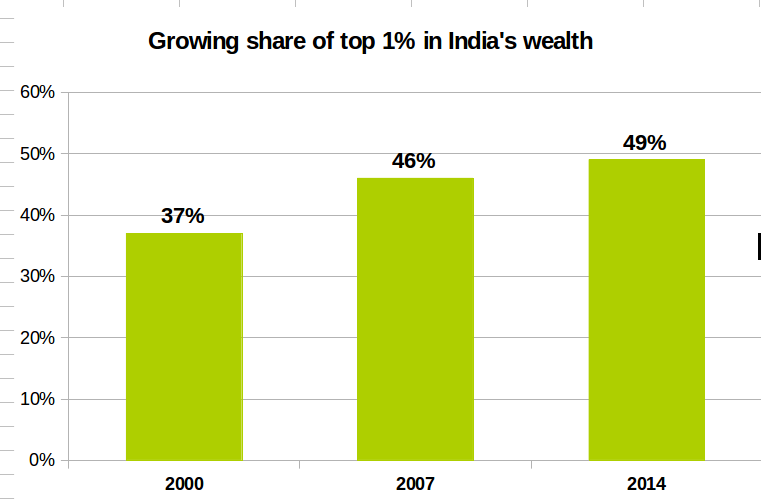
Data Source: Credit Suisse Wealth Data Book
India's economic growth – for whom?
In the past 10 years, India's private wealth grew by about 1.6 trillion dollars ($ 1,597 billion). Of this, about $1 trillion (58%) went to the top 1%. The share of the next 9% was about $350 billion (22%) and the share of bottom 90% in the increased wealth was just $320 billion (20%).
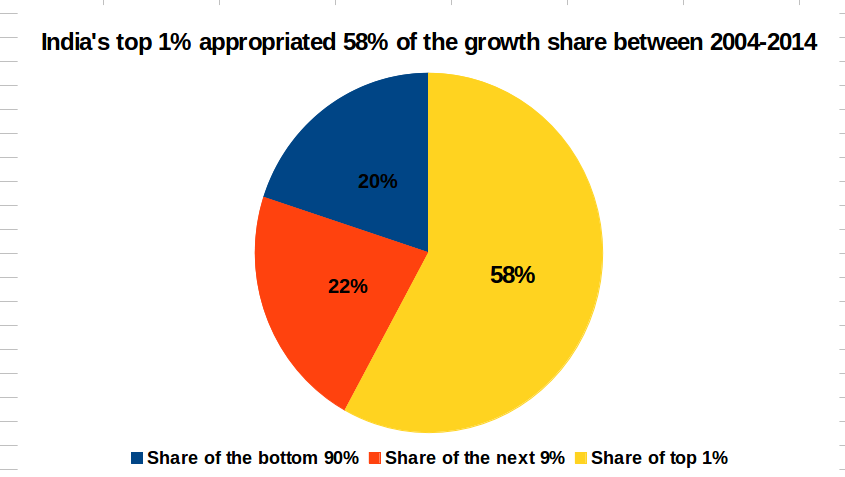
Data source: Credit Suisse Wealth Data Book
As are result of this skewed appropriation of the growth, the share of the wealth of the top 1% increased compared to all other segments. Between 2000 and 2014, while the share of top 1% increased by 12.2 percentage points, the share of the next 9% fell by 4.1 percentage points and the share of the bottom 90% fell by 8.1 percentage points.
As the top 1% were appropriating the benefits of India's economic growth, the number of the hungry in India grew from 186 million to 191 million, according UN. India has 17% of the world's population but has more than 25% of its hungry.
These numbers and ratios leave us in no doubt as to who the beneficiaries of the neoliberal growth story of the past 15 years, are. The talk of trickle down rings hollow in the face of such evidence.
Get the latest reports & analysis with people's perspective on Protests, movements & deep analytical videos, discussions of the current affairs in your Telegram app. Subscribe to NewsClick's Telegram channel & get Real-Time updates on stories, as they get published on our website.









